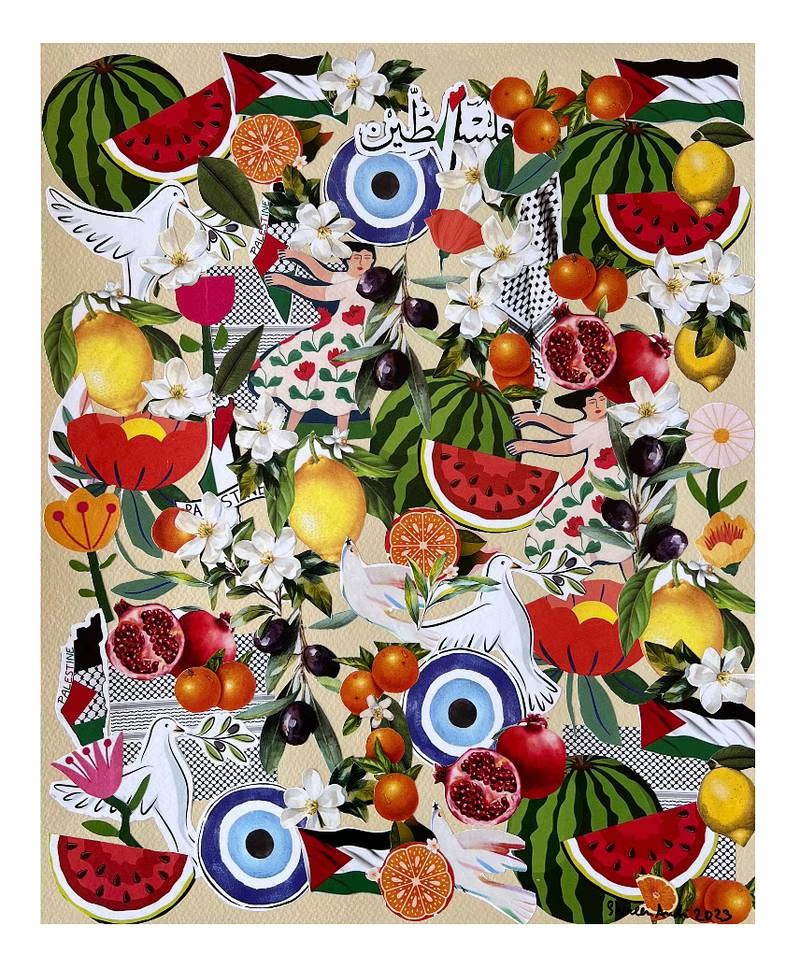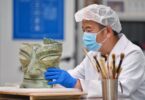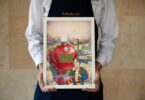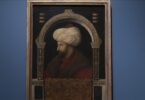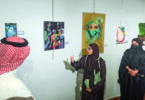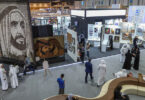Katy Gillett
Pablo Picasso once described artists as political beings, constantly aware of the heartbreaking things happening in the world. “Painting is not made to decorate apartments,” he said. “It’s an offensive and defensive weapon.”
For many artists across the Arab world witnessing the war unfolding in Gaza, weaponising their art has become the only way for them to process the tragedies.
A black and white print of Al Aqsa Mosque in Jerusalem serves as the backdrop to Emirati artist Aysha Almadhani’s latest work, which she shared on Instagram last week.
On top, she’s intricately embroidered flowers and olive leaves, punctuating the tones with bright hues of pink, yellow and green.
:quality(70)/cloudfront-eu-central-1.images.arcpublishing.com/thenational/UCDHOGDVOJFJRG777IKU25WMR4.jpeg)
“The creation of this artwork was driven by my fervent belief in the eventual freedom of Palestine,” she tells The National. “It serves as a reminder of our need for patience, as we trust in the support and imminent victory promised by Allah.”
She hopes the piece instils in people the same conviction in the liberation of Gaza. “It’s a response to the challenging days we’ve witnessed, and a beacon of hope for all Arabs, reflecting the assurance given to us in the Quran.”
The work of Shereen Audi, who splits her time between Canada and Jordan, also serves as a symbol of hope. She has created a number of collages on paper, wood and canvas, including With Love to Palestine, in which she’s used images of lemons, olives, birds, jasmine, poppies and watermelons. These elements represent what Palestine is famous for and what makes it beautiful, she says, and the artwork has been shared far and wide across social media platforms in recent days.
She hopes these new pieces “help draw attention to the situation in this beautiful country that only deserves peace and deserves to stay alive”.
With Love to Palestine is one of her favourites, it gives “a feeling of light in these dark times and a little bit of hope to everyone”, she adds.
She has donated a print of the piece to Gallery Bawa in Kuwait, which is holding an emergency relief sale called Prints for Palestine. All proceeds will be donated to the Kuwait Red Crescent Society. The gallery is collaborating with research platform and collective Mathqaf in Doha, which reached out to the artists involved, and Dubai’s Gulf Photo Plus, which is helping with printing, packaging and shipping.
“The exhibition came together in an urgent manner of course,” Gallery Bawa director Bandar Al-Wazzan says. “Within a few days, we had the designs of all the artists ready to go … This is not the kind of art exhibition with a curation, this is an emergency sale. The subject matter is clear: shine a light on Palestine.”
The sale had an internal goal of $10,000, which was hit on Saturday, just five days after launching. In the meantime, dozens more artists have submitted works to be part of the campaign. “We hope to include some of these new artworks in an extended section of the sale,” says Al-Wazzan. “The sale will keep going and we will do our best to collect even more donations.”
For those drawn to works that celebrate the country’s many symbols and its vibrant culture, Audi’s pieces may catch your eye, Al-Wazzan says. “If you like more minimal yet powerful work, you could go for Ahmed Alrefaie’s Path of Return or Rua AlAwadhi’s Our Return,” he adds.
Alymamah Rashed’s I Am the One Who Changes Fates and Nourie Flayhan’s A Memory of Palestine feature more delicate aesthetics. Sarah Elawad’s With Our Soul and Our Blood and Mohamed Samir’s Free Palestine are brash and daring, and present bold calls to action.
Palestinian-Jordanian illustrator Aya Mobaydeen’s Patterns of Palestine is also part of the sale. It, like many of her works, features patterns that carry deep cultural significance for Palestinians. “They represent our rich history and they’re a reminder that our heritage will always be a part of who we are,” she says.
“I hope people see a few important messages in my pieces. Firstly, how the world has failed the children of Gaza, not just in seeing their suffering but in feeling it in their hearts. Second, the art represents the strength of the people in Gaza as they resist occupation.”
Art spreads awareness, after all, says Al-Wazzan. “And that is what we have been seeing while posting our artist’s designs on our platforms. People have been sharing and reposting in a way I have never seen before this past week.
“Each time a design is shared, it acts as a reminder for people who are still not speaking up to speak up and put an end to the occupation in Palestine.”
Lebanese artist Said Elatab is no stranger to how social media boosts an artwork’s message. His work went viral last year when he gave Palestinian-American supermodel Bella Hadid a portrait of her real estate mogul father Mohamed Hadid. He also gave her a piece called The Rise of the Palestinian People and he has been painting scenes from the occupied territories for more than 30 years.
In the past three weeks, he’s created several new pieces depicting the violence in Gaza, including one that took 10 days to finish.
He hopes his brand of abstract expressionism, inspired by Vincent van Gogh, contributes in some small way to stopping “the genocide by Israel’s army to the people of Gaza”, he says.
“I hope we’ll make a difference and I’ll make some effect on what’s going on,” he says.
It’s not only Arab artists who have been moved to share work, either. Greek art instructor Kostis Grivakis, who lives in Oman, has been posting his latest works, as well as older ones inspired by Palestine. With this, he wants to “show the world in a more poetic way how beautiful Palestine is and how unfair it is what’s happening”.
His style varies from pop art collages to pieces using upcycled and recycled items. In one, he combines an old map of Palestine with patterns of tatreez – traditional Palestinian embroidery art – olive branches and poppies, as well as a man riding a donkey, all of which is framed by a series of figs on a bright red background.
:quality(70)/cloudfront-eu-central-1.images.arcpublishing.com/thenational/5K645AQQFJC3PHGCNGMCDLCBVY.jpeg)
“I was always inspired by the beauty of simple life,” says Grivakis. “I could have created art inspired by the war, but life creates the strongest pictures every day in the news. Instead, I choose to focus on how everyday life was and is in Palestine.
“I wanted to show the world that we are all Palestinians.”
He says he feels a great affinity with the Palestinian people as he comes from a Mediterranean island where life is similar to that which they experienced before Israel was created. “It is my duty to honour my grandfather’s love for olive trees,” Grivakis says. “It is my duty to honour my grandmother’s love of embroidery.
“This is my hope for the world. To see themselves through the eyes of people who had a beautiful land and beautiful life. Somehow my art asks people all over the world: ‘What’s more precious than to live free in the land where you were born?’”
Another artist who draws on his connection to this land is Shadi Abou Sada, from Syria. “I paint what my childhood memories hold, which seem to repeat with every generation as if we are stuck in a never-ending cycle in that region,” he says.
:quality(70)/cloudfront-eu-central-1.images.arcpublishing.com/thenational/CWHEPKOWVJHDPNUJ57MLSX5F4Y.jpg)
Many of his works feature children eating watermelons, often used as a symbol of Palestinian resistance and which he started drawing back in 2000. “The children in my paintings are symbols of the past, present and future,” he says.
“Amid their slender bodies and smiles, and between the pale white of their skin and the vibrant background colours, they present the contradictions we live with every day.”
The collection affirms his support of the Palestinian cause, he says, as it “intersects significantly with our own plight in Syria, in suffering and injustice”.
As long as the occupation lasts, watermelon works will remain present, he adds. “As long as our children are robbed of their lives in our homeland, I paint them as flat, without perspective or depth, as if to say: this image is direct, with no interpretation or other meaning,” he adds.
“It is our last childish dreams, lingering on empty plates of watermelon slices.”
Courtesy: thenationalnews

